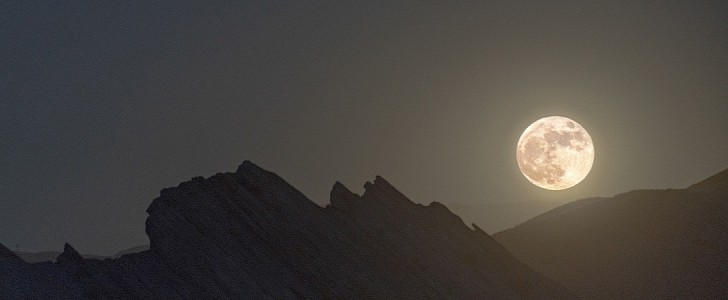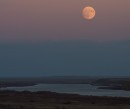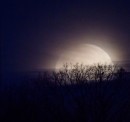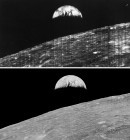Night skies have put on a great show in 2021, and it's far from being over. After we saw the "Ring of Fire" solar eclipse and a Strawberry Supermoon in June, last month we were blessed with the Harvest full moon, which signaled the beginning of fall. Now, an even more spectacular celestial event is ready to fill up the sky: the Hunter's Moon.
The next full moon is set to reach peak illumination at 10:57 a.m. EDT on Wednesday, October 20th. Most people will be able to see the Hunter's Moon tomorrow, but from Australian Central Standard time eastward to the International Date Line, the event will take place on Thursday.
According to the Farmer's Almanac, the names of the monthly full moons likely originated in early Native American, Colonial American, and European folklore. Each name was traditionally assigned to the whole lunar month in which it occurred, as well as to all of the moon's phases.
But the Hunter's Moon is different. Just like the last month's full moon, the Harvest Moon, it is not restricted to a single month. Instead, it is tied to an astronomical event: the autumnal equinox. Thus, the Harvest Moon occurs first, as it is the full moon closest to the autumn equinox, followed by the Hunter's Moon.
It is believed that the full Hunter's Moon got its name because it signaled the start of hunting season in preparation for the next cold winter. Around this time of the year, farmers clean their fields, allowing hunters to clearly see deer and other animals that come out to look for food after a harvest.
What makes this moon stand out is that this year it will occur at the same time as the Orionid meteor show, one of the most beautiful showers of the year. Orionids are usually active in mid-October, with up to 20 meteors visible every hour.
But this year, Hunter's Moon is set to steal the show, as its light will block us from seeing the meteor shower.
Similar to the Harvest Moon, the upcoming Hunter's Moon will appear full for around three days in the night sky, from Monday night into Thursday night. So skywatchers, you can already start planning on how to take some of the most amazing pictures of this celestial event!
According to the Farmer's Almanac, the names of the monthly full moons likely originated in early Native American, Colonial American, and European folklore. Each name was traditionally assigned to the whole lunar month in which it occurred, as well as to all of the moon's phases.
But the Hunter's Moon is different. Just like the last month's full moon, the Harvest Moon, it is not restricted to a single month. Instead, it is tied to an astronomical event: the autumnal equinox. Thus, the Harvest Moon occurs first, as it is the full moon closest to the autumn equinox, followed by the Hunter's Moon.
It is believed that the full Hunter's Moon got its name because it signaled the start of hunting season in preparation for the next cold winter. Around this time of the year, farmers clean their fields, allowing hunters to clearly see deer and other animals that come out to look for food after a harvest.
What makes this moon stand out is that this year it will occur at the same time as the Orionid meteor show, one of the most beautiful showers of the year. Orionids are usually active in mid-October, with up to 20 meteors visible every hour.
But this year, Hunter's Moon is set to steal the show, as its light will block us from seeing the meteor shower.
Similar to the Harvest Moon, the upcoming Hunter's Moon will appear full for around three days in the night sky, from Monday night into Thursday night. So skywatchers, you can already start planning on how to take some of the most amazing pictures of this celestial event!






